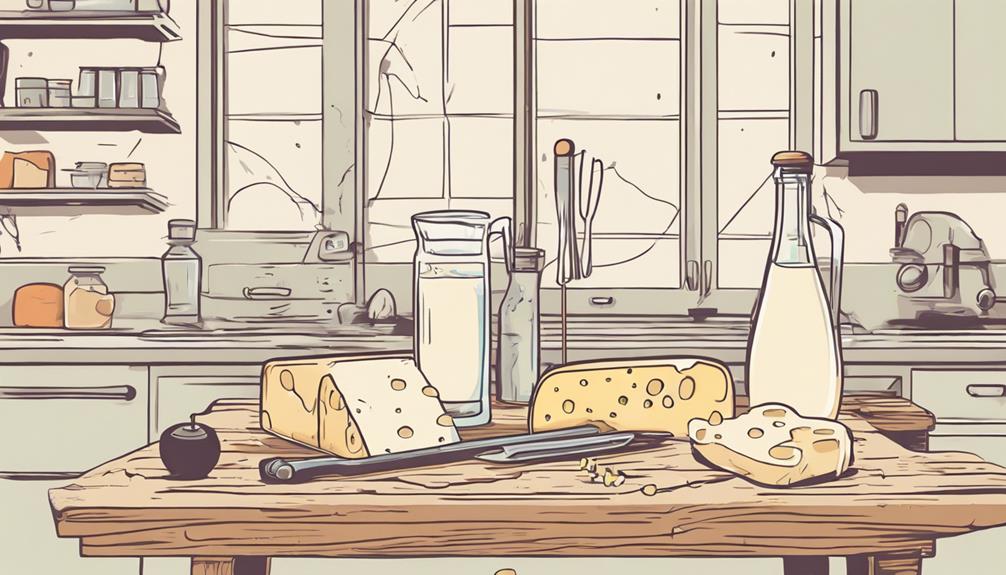See All: Cheese Making
Watch How To Do This Here…
YES! You can make cheese at home. Take our FREE 4-Part video training series to simplify cheesemaking for everyone. No waste. No overwhelm. No missing steps. You can make delicious, healthy cheese, even if you only have access to grocery store milk and regular kitchen equipment…
Click Here To Watch Step By Step Now
“I’m interested in making my own cheese at home, but I’ve been told that ensuring the milk I use is safe is absolutely vital. Could you provide some detailed guidance on how to do this, especially since I live in a rural area where raw milk is more accessible than pasteurized milk? Your insights would be really helpful.” Thanks, Patricia, Ontario, Canada.
How Do You Ensure The Milk You Use Is Safe For Cheese Making?
Patricia, making cheese is a rewarding and wonderful experience, but indeed, ensuring the milk you use is safe is crucial. Let’s go through the steps and considerations to make sure your milk is up to the task.
Understand The Types of Milk Available
First off, let’s briefly touch on the types of milk you might come across:
- Raw Milk: This is unpasteurized milk straight from the cow. It’s rich in flavor and enzymes but can carry harmful bacteria if not handled properly.
- Pasteurized Milk: This milk has been heated to kill harmful bacteria. It’s safer but can sometimes have a slightly altered flavor and reduced enzyme activity.
- Ultra-Pasteurized Milk: This milk is heated to even higher temperatures. While very safe, it’s often unsuitable for cheese making because the proteins are denatured.
Choosing and Handling Raw Milk
If raw milk is your choice, it must be of the highest quality and handled correctly:
- Source from Reliable Producers: Find a local dairy farm that follows good animal husbandry and cleanliness practices. Visit the farm if possible to observe their operations.
- Check for Certifications: Ensure the farm has necessary health certifications and follows safe milking practices.
- Store Properly: Keep raw milk refrigerated at or below 4°C (39°F) and use it within five days to maintain its safety and quality.
Pasteurizing Milk at Home
If you’re concerned about raw milk safety, you can pasteurize it at home:
- Heat the Milk: Slowly heat your milk to 72°C (161°F).
- Hold the Temperature: Maintain this temperature for 15 seconds.
- Cool Rapidly: Quickly cool the milk by placing the container in an ice bath – this prevents harmful bacteria from growing.
Homemade pasteurization strikes a good balance between safety and preserving the milk’s cheesemaking properties.
Testing Milk Quality
Regardless of the milk source and type, testing its quality can save a lot of headaches:
- Smell Test: Fresh milk should smell sweet and clean. Any off smells indicate spoilage or contamination.
- Acidity Test: Use pH strips to check the milk’s acidity. Ideal pH is around 6.6-6.8. A pH significantly lower than this could indicate that the milk has started to sour.
Maintaining Hygiene
Maintaining hygiene throughout the process is paramount:
- Sanitize Equipment: Use food-grade sanitizers for your utensils, containers, and equipment to prevent cross-contamination.
- Personal Hygiene: Wash hands thoroughly before handling milk and cheese. Using gloves can add an extra layer of protection.
Understanding Milk Fat Content
The fat content of the milk can also impact your cheese quality:
- Whole Milk: Often preferred for cheese making due to its rich fat content, which contributes to creamy texture and flavor.
- Skim or Low-Fat Milk: Can be used for harder cheeses, but additional cream or butterfat may be needed to achieve desired texture.
Consulting Guidelines and Certifications
Always adhere to local guidelines, as different regions have various rules surrounding the handling and sale of raw milk:
- Check Local Laws: In Ontario, Canada, as in many places, selling raw milk is heavily regulated. However, using it for personal consumption is more lenient but still demands caution.
- Certification Programs: Some areas offer certification programs for raw milk producers. This can be a good indicator of quality and safety if you decide to go the raw milk route.
Environmental Conditions
Consider the specific conditions under which the cows are raised:
- Pasture-Fed Cows: Cows that graze on natural pastures often produce milk with superior flavor. Grass-fed milk can be especially good for cheese making.
- Clean Living Conditions: The environment where cows live should be clean and well-maintained to reduce the risk of contamination in the milk.
Monitoring and Adjusting Along the Way
The quality of milk can vary, so constant monitoring and slight adjustments to your cheesemaking process might be necessary:
- Seasonal Changes: Milk changes with the seasons, affecting cheese texture and flavor. Be prepared to adjust rennet and cultures accordingly.
- Regular Sensory Evaluation: Taste, smell, and visually inspect your milk regularly to catch any early signs of spoilage or issues.
Patricia, these steps and precautions will help ensure the milk you use for making cheese is safe and of high quality. Cheese making is a delicate balance of art and science, and starting with the best milk possible sets a solid foundation for delicious results.
Final Thoughts…
Patricia, ensuring the milk you use for cheese making is both safe and high-quality involves a combination of sourcing from reputable producers, maintaining excellent hygiene practices, and constant monitoring of the milk’s condition. Whether you opt for raw or pasteurized milk, paying attention to these details will help you create exceptional cheeses. Thanks for your question and happy cheese making!
Return To: Cheese Making
Free Step By Step Cheese Making Videos…
YES! You can make cheese at home. Take our FREE 4-Part video training series to simplify cheesemaking for everyone. No waste. No overwhelm. No missing steps. You can make delicious, healthy cheese, even if you only have access to grocery store milk and regular kitchen equipment…

